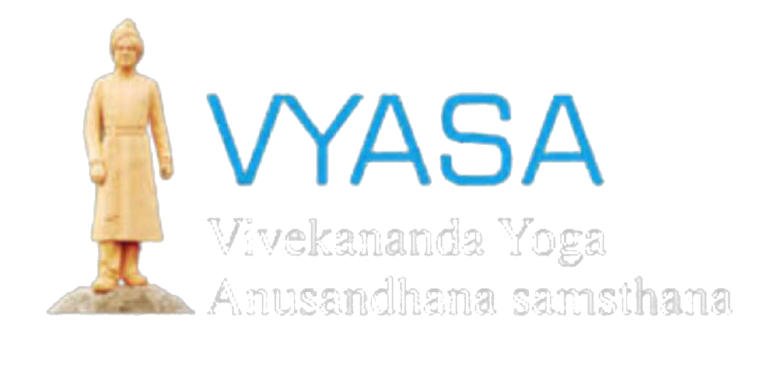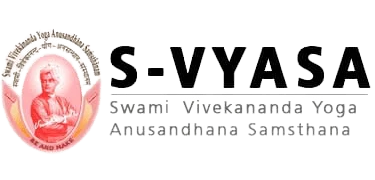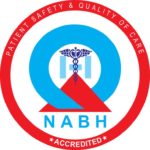Book Appointment Today with the best Ayurvedic Doctor for Arthritis
Are you experiencing stiffness in your body when you get out of bed in the morning? Do you also feel intense joint pain that gradually subsides as you go about your daily routine? These symptoms might indicate a possibility of rheumatoid arthritis, known as “aamvaat” in Ayurveda. Curious to learn more about this condition and how Ayurvedic treatment can potentially help in joint pain relief? Explore the ancient holistic healing system of Ayurveda and discover natural remedies that could bring relief and improve your overall well-being.
Amavata is a condition that occurs when both Ama (toxins) and Vata become aggravated simultaneously, entering the joints and ultimately causing body stiffness known as Stabdhata. When Vayu becomes imbalanced, it spreads Ama throughout the body via the body’s channels (Dhamanies) and settles in specific areas like joints and digestive organs. This can lead to symptoms such as joint stiffness, swelling, and tenderness, often causing mobility issues. The symptoms of Amavata closely resemble those of rheumatism, including conditions like rheumatoid arthritis and rheumatic fever. Notably, rheumatism is an autoimmune disorder linked to collagen disorders and shares a significant association with Amavata. Amavata treatment involves Panchakarma therapies, dietary changes, herbal remedies, lifestyle adjustments, yoga, Ayurvedic massage, external therapies, stress management, and individualized care under the guidance of an Ayurvedic practitioner. Rheumatoid arthritis treatment (Amavata) in Ayurveda aims to balance the doshas and eliminate toxins (ama) from the body to alleviate the symptoms of rheumatoid arthritis and restore overall health and mobility.
Rheumatoid Arthritis-RA
Rheumatoid arthritis, commonly known as RA, is a condition that involves the immune system mistakenly attacking healthy cells, leading to inflammation and painful swelling in various parts of the body.
The joints are primarily targeted by RA, with many of them being affected simultaneously. Predominantly found in the hands, wrists, and knees, this inflammatory disease causes damage to the joint tissue due to inflammation of the joint lining. As a result, individuals may experience long-lasting or chronic joint pain, instability, and changes in joint shape or structure, leading to deformities.
RA can have a significant impact on daily life, making it crucial to explore effective management strategies and seek appropriate medical guidance to alleviate symptoms and improve overall quality of life.
Signs of Rheumatoid Arthritis
Rheumatoid arthritis, or RA, can fluctuate between periods of worsening symptoms, known as flares, and times of improvement, referred to as remission.
The typical signs and symptoms of RA comprise:
- Pain or aching in multiple joints.
- Stiffness in several joints.
- Tenderness and swelling in numerous joints.
- Symmetrical symptoms, meaning they occur on both sides of the body (e.g., in both hands or both knees).
- Unintentional weight loss.
- Fever.
- Fatigue or a persistent feeling of tiredness.
- General weakness or a lack of strength.
If you experience any of these symptoms, it is essential to consult a healthcare professional for a proper diagnosis and appropriate management of RA to alleviate discomfort and improve your well-being.
Causes of Rheumatoid Arthritis
The exact cause of Rheumatoid Arthritis (RA) is not fully understood. However, it is believed to be a result of both genetic vulnerability and environmental factors. Some people have genes that increase their risk, such as HLA DRB1 and PTPN22. But not everyone with these genes will get RA.
According to Ayurveda, certain lifestyle and dietary habits can trigger RA. These include overexertion, irregular routines, eating spicy and incompatible foods, experiencing stress, not getting enough rest, and leading a mostly inactive life. These factors are thought to contribute to the development of RA.
Allopathy & Ayurvedic Treatment of Rheumatoid Arthritis – RA
Both Allopathy and Ayurvedic treatments for Rheumatoid Arthritis (RA) have the common goal of preserving joint functionality, preventing joint damage, controlling inflammation, managing symptoms like pain and stiffness, and maintaining optimal skeletal mobility. Their aim is to prevent deformities and complications associated with RA. Using RA tablets can help relieve severe pain, but extended use may cause various side effects.
Treatment for Rheumatoid Arthritis in – Contemporary Medicine (Allopathy)
The main treatment for Rheumatoid arthritis involves using anti-inflammatory and pain-relieving medications. Additionally, disease-modifying drugs like Steroids, Methotrexate, Hydro-chloroquine, and Sulfasalazine are used to reduce joint inflammation and prevent joint damage. However, these drugs must be used for a long time and may have side effects like liver damage and digestive problems.
Ayurvedic Treatment for Rheumatoid Arthritis
In Ayurveda, Rheumatoid Arthritis is referred to as “AMAVATA,” and the treatment approach is highly effective and holistic. It involves dietary adjustments, lifestyle changes, stress management, herbal medicines, Ayurvedic therapies, yoga asanas, pranayama, and meditation to restore the body’s balance and harmony (Homeostasis). This comprehensive approach proves to be successful for a majority of patients.
Joint pain treatment in an Ayurvedic clinic involves a holistic approach that includes herbal remedies, dietary modifications, and therapies to reduce inflammation, improve joint mobility, and enhance overall well-being. In typical practice, apart from arthritis medications, patients usually require long-term treatment but respond well to ayurvedic medicine for arthritis and external applications combined with intensive therapies, including Panchakarma (detoxifying therapies). Panchakarma is vital in managing chronic autoimmune diseases like RA and involves a sequence of therapies leading to detoxification procedures like Vamana (emesis), Virechana (purgation), Basti (enema), and Nasyam (nasal administration). Among these, Vasthi, or medicated enema, is considered the most important therapy for RA treatment. It is preceded by other preparatory therapies such as Dhanymla dhara (pouring of warm fermented liquid), Podikkizhi (herbal powder massage), Elakizhi (massage with bolus of fresh herbal leaves), and oil massage with steam bath. The combination of these therapies, personalized to each patient’s needs and administered under the supervision of knowledgeable Ayurvedic physicians, effectively reduces inflammation, alleviates symptoms, and prevents joint damage without relying on potent drugs.
Additional therapies like Tailadhara (pouring medicated oils on the body), Navarakizhi (massage with a bolus of rice boiled in medicated milk), Ksheeravasthi (medicated milk-based enema), and the use of tissue-protecting herbal preparations (Rasayanas) are recommended to strengthen tissues, improve mobility, flexibility, and functional capability.
Periodic administration of Ksheeravasthi with a short course of preparatory therapies has shown to prevent further joint damage in several patients
Naturopathic Pain Management and Treatment
While arthritis presents pain in diverse ways depending on its form, the core principles of naturopathic management and treatment options are remarkably similar across all types of this condition.
Diet- Among the non-pharmacological treatment approaches, dietary interventions rank among the most prevalent. In recent times, researchers have increasingly focused on the role of dietary antioxidants in managing arthritis, as reported in various studies. While the exact cause of arthritis remains largely unknown, certain components found in food, both nutrient and non-nutrient, have been observed to impact the inflammatory process and influence disease progression. Studies have revealed the protective effects of fruits and their polyphenols in various forms of arthritis, both in pre-clinical, clinical, and epidemiological investigations. Berries and berry extracts, in particular, have demonstrated beneficial effects on joint structures and overall inflammation levels. Additionally, specific fruit polyphenols like quercetin and citrus flavonoids have shown promise in alleviating arthritis symptoms.
Physical Medicine- Physical medicine encompasses a patient care approach that incorporates various physical modalities like physical therapy, chiropractic, other body work techniques, and hydrotherapy. These therapeutic methods have shown potential in alleviating arthritis symptoms. For instance, a six-week trial with rheumatoid arthritis (RA) patients demonstrated that combining physical therapy sessions with disease education resulted in improved mobility and reduced joint stiffness. Moreover, evidence supports the effectiveness of hydrotherapy and spa medicine in arthritis treatment. In a study involving RA patients, therapies comprising mud packs, mineral baths, and shower massage over a 28-day period significantly improved symptoms and functioning, promoting an enhanced sense of overall well-being. Another study focusing on RA patients found that a two-week treatment involving mud packs and mineral baths resulted in improved pain and tenderness for an average duration of six months after the treatment.
Acupuncture
Acupuncture involves the insertion of thin needles into specific points on the body, which can trigger the release of natural pain-relieving chemicals like endorphins. This can be particularly helpful for those experiencing joint pain due to arthritis. Additionally, acupuncture can have an impact on the immune system, which may benefit individuals with certain types of arthritis, such as rheumatoid arthritis, where the immune system attacks the body’s own tissues. Improving circulation is another potential benefit of acupuncture for arthritis. By increasing blood flow to affected areas, acupuncture can promote the delivery of essential nutrients and oxygen to the joints, aiding in tissue repair and reducing inflammation. This can be particularly helpful for those experiencing pain in their hips, knees, or ankles, as these are areas commonly affected by arthritis.
Yoga
With therapeutic yoga there is a promising way of treatment for joint pain and stiffness. Despite its proven advantages, arthritis can often hinder physical activity, as indicated by studies showing that 43.5% of adults with arthritis report activity limitations due to their condition. Interestingly, research suggests that regular physical activity may also play a preventive role in the development of arthritis. Adults who engage in no leisure time physical activity have a significantly higher prevalence of arthritis, reaching 23.6%, compared to those who meet basic physical activity recommendations, where the prevalence drops to 18.1% after adjusting for age.
When to see a doctor?
It often comes as a surprise to many that “arthritis” is not a specific diagnosis but rather a broad term encompassing over 100 different diseases and related conditions. Identifying the exact type of arthritis or related condition you have is the initial crucial step in devising an appropriate treatment and management plan.
For certain forms of arthritis, timely action is essential. the effects of rheumatoid arthritis can have daily challenges in performing day to day activities. If you have a type of arthritis that can potentially lead to permanent joint damage, seeking prompt treatment becomes paramount as it can safeguard joint pain relief and avert the development of other severe health complications. Are you wondering where to discover the best Ayurvedic treatment near me? Experience a transformative journey with Vivekananda Health Global, and discover the healing power of Ayurveda ,Naturopathy and Yoga in order to manage joint pain and arthritis affects.




